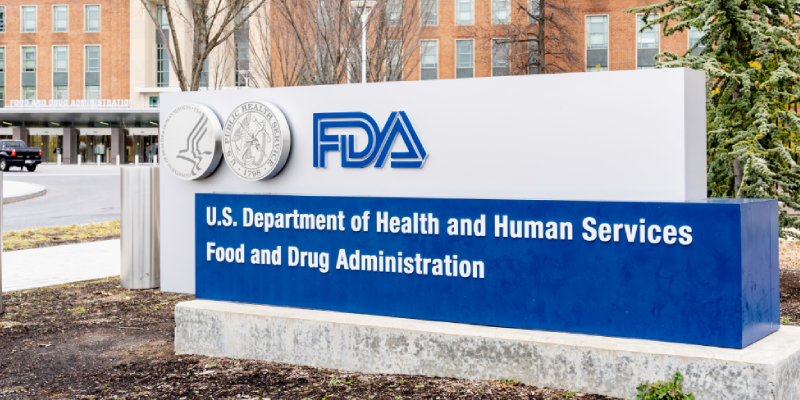
Worldwide, tuberculosis (TB) remains a leading cause of death due to infectious disease despite steady declines in TB incidence. For some countries that receive immigrants, the continuance of TB is due, in part, to reactivation of undetected latent TB infection (LTBI). Identification and effective treatment of LTBI significantly reduces TB reactivation. Mass screening is not cost-effective; however, targeted screening of populations with high risk for reactivation may be feasible and cost-effective.
Recommendations from the World Health Organization and from countries such as Canada and the United States call for targeting LTBI screening in persons with comorbid conditions that increase the risk for TB, including chronic kidney disease (CKD) requiring dialysis. Unadjusted rates of TB may be up to 2.5-fold higher than in the general population, and individuals with TB who are on dialysis have higher rates of mortality than the general population.
Jonathon R. Campbell, PhD, and colleagues recently conducted a cost-effectiveness analysis to examine LTBI screening in patients diagnosed with CKD stage 4 or 5 not requiring dialysis and patients who initiated dialysis therapy. Results of the analysis were reported in the American Journal of Kidney Diseases [2019;73(1):39-50].
The researchers utilized health administrative data from British Columbia, Canada. The data included persons who obtained a Canadian permanent resident status visa between 1985 and 2012 and who became residents of British Columbia at any time between 1985 and 2013. Individuals with late-stage CKD or who initiated dialysis therapy and did not have previous TB, LTBI screening, or LTBI treatment and did not undergo transplantation prior to or within the subsequent 30 days were identified for inclusion in the analysis.
The primary outcome of interest was active TB and, in patients with late-stage CKD, the progression outcome was diabetes; death was also an outcome. Other outcomes were costs (in 2016 Canadian dollars), cases of TB, and quality-adjusted life years (QALYs). The researchers also calculated the incremental cost-effectiveness ratio for QALYs gained.
The researchers compared screening with the tuberculin skin test (TST) or interferon-gamma release assay (IGRA) with no screening at the time of late-stage CKD diagnosis and time of dialysis initiation. Individuals who tested positive were treated with isoniazid for 9 months.
When patients were screened for LTBI at either initiation of dialysis therapy or diagnosis of late-stage CKD, the incidence of TB was reduced and there was an increase in individual QALYs. Regardless of the test used in individuals of any age from countries with a moderate to very high incidence of TB, LTBI screening at initiation of dialysis was cost-effective.
Results of analysis of LTBI screening at diagnosis of late-stage CKD were more nuanced; age, TB incidence, and diagnostic test used had an impact on cost-effectiveness decisions. However, overall, screening with IGRA was consistently dominant over TST screening; in each scenario, costs were lower and outcomes were better with IGRA versus TST.
Among individuals from countries with low incidence of TB, screening was not cost-effective. Screening with either test was highly cost-effective in individuals from countries with a moderate to very high incidence.
For persons <60 years of age, IGRA screening was dominant, with lower costs and better outcomes. Compared with no screening, screening with TST resulted in incremental cost-effectiveness ratios of $78,578, $60,443, and $13,112 per QALY gained among those from countries with a moderate, high, and very high incidence, respectively. In this age group, TB incidence was reduced by 15% with TST screening and by 21% with screening with IGRA.
Among individuals ≥60 years of age, IGRA remained dominant to no screening and TST screening among those from countries with a moderate ($67,733/QALY gained), high ($47,738/QALY gained), and very high ($12/QALY gained) TB incidence. TST screening was also cost-effective compared with no screening. With the TST, TB incidence decline was 18%; with IGRA, the decline was 25%.
Five-year incidence of TB was reduced by screening at late-stage CKD diagnosis by 19% with IGRA and 14% with TST. Among individuals from counties with low incidence of TB, IGRA was cost-prohibitive when applied at late-stage diagnosis. For those from countries with moderate to very high incidence, the cost-effectiveness of screening varied based on age and diagnostic test.
Among persons <60 years of age, screening with IGRA was not cost-effective among those from countries with a moderate or high incidence of TB ($132,087/QALY gained and $113,590/QALY gained, respectively). The test was cost-effective among those from countries with very high TB incidence, with an ICER of $84,423 per QALY gained. Screening with TST was not cost-effective in individuals <60 years of age.
Screening was more cost-effective in those ≥60 years of age. IGRA was cost-effective among those from countries with moderate, high, and very high TB incidence, and TST screening was cost-effective among those from countries with high and very high incidence.
Screening at initiation of dialysis therapy was unlikely to be cost-effective among individuals from countries with low TB incidence. However, IGRA screening at a willingness-to-pay threshold of $100,00 was highly probable to be the most cost-effective option. Probabilities were 79.4%, 82.3%, and 90.5% among persons <60 years of age from countries with moderate, high, and very high incidence, respectively. For persons ≥60 years of age at that threshold, the probabilities were 79.1%, 82.3%, and 91.8%, respectively.
There were some limitations to the study cited by the authors, including generalizability and referral bias.
“Our study suggests that populations that may require frequent clinical care and have similar TB risk as those with late-stage CKD or dialysis therapy may also be cost-effective to screen, such as those with certain cancers or who require long-term immunosuppression therapy. Research examining the cost-effectiveness of LTBI screening in these populations will be key to inform future policy aimed at eliminating TB worldwide,” the researchers said.
Takeaway Points
- The incidence of tuberculosis (TB) in countries with low incidence of TB may be driven by the reactivation of undetected latent TB infection (LTBI) in residents born abroad.
- Researchers conducted a cost-effective analysis of screening for LTBI in patients with advanced stage chronic kidney disease (CKD) or those initiating dialysis.
- In patients with late stage CKD, screening with interferon-gamma release assay (IGRA) was only cost-effective in individuals ≤60 years of age from countries with an elevated incidence of TB. IGRA screening was superior to the tuberculin skin test in all situations.







 © 2025 Mashup Media, LLC, a Formedics Property. All Rights Reserved.
© 2025 Mashup Media, LLC, a Formedics Property. All Rights Reserved.